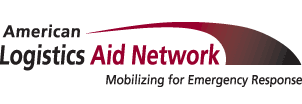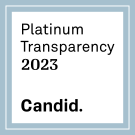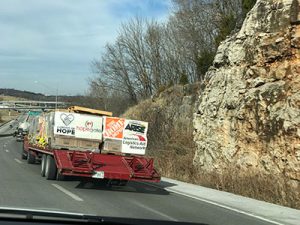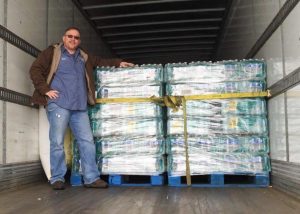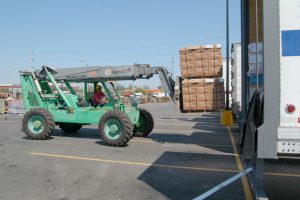My family has recently been enjoying watching the original The Muppet Show.
Somewhere along the way we’re going to reach the episode where Kermit finally sings (It’s Not Easy) Bein’ Green, which is one of my favorites.
Here at ALAN, we want to talk about another kind of green – the green of being environmentally friendly.
It isn’t something we ordinarily discuss, because we usually have so many other fish to fry. But recent conversations – one about wasted donations after disasters, and another about empty or wasted space in trucking – reminded me of how the work that we do is often as good for our planet as it is for disaster survivors.
Empty Miles, Meet Humanitarian Cargo
For starters, it’s an open secret that carriers sometimes run trucks that are either partially or completely empty. And that, of course, is the opposite of green.
But it doesn’t have to be that way.
Over the years, ALAN has helped numerous non-profits move supplies to disaster sites by matching them with trucking companies that had a little extra capacity in a particular lane (and that they were willing to donate). In fact, it’s how we fill the vast majority of our transportation requests.
We hope to do even more of this green matching in the future, as technical advances give us greater visibility into these empty miles. And while we don’t anticipate that we’ll ever be able to fill 100% of the industry’s excess transportation space with humanitarian cargo, we do know that every percentage we can fill will have the dual effect of reducing non-profits’ greenhouse gases AND the green cash that they’d ordinarily have to spend.
Keeping “Collectables” Out Of Landfills
You’ve heard me bring up this second example in other contexts numerous times.
Often individuals and organizations read about a disaster in a faraway place and jump to action to help by purchasing supplies and dropping them off at a local collection site. Unfortunately, by the time these items are moved – sometimes thousands of miles – to the disaster location, they’re usually either a) no longer needed or b) not in the hands of a reputable non-profit or government agency that understands how to get them efficiently distributed. As a result, it’s not uncommon for these donated items to eventually wind up in landfills.
One of the ways that ALAN helps combat such waste is by connecting communities (or businesses) that have a surplus of collected items with non-profits that specialize in putting them to good use We also help get those goods transferred to these non-profits – or find warehousing donors who will store the goods until the non-profits can use them.
And that’s a win-win for everyone, including the environment.
Use It Or Lose It
And then, there is the issue of potential food waste. It was a very real challenge last year, when many of the restaurants and other institutions (like stadiums) that were suddenly closed as a result of the pandemic found themselves with a lot of perishable food that they’d already ordered. Rather than let this food go to waste, many of them donated it. (And props to them for doing so!)
That’s where ALAN came in.
Throughout 2020 and early 2021, we helped connect many food banks, churches and other non-profits with the extra boxes and refrigerated transportation they needed in order to receive, sort, store and distribute these welcome donations. As a result, things like fresh produce and yogurt found their way onto the tables of families in need instead of into the trash heap.
Wocka, Wocka, Wocka
I could go on. But I have a few more The Muppet Show episodes I really want to watch – and a lot of active ALAN cases that I still need to find donors for.
Besides, I think you get the idea.
Contrary to what some people think, being more efficient and being green doesn’t have to be an either-or proposition – as ALAN’s many day-to-day activities demonstrate.
While we’re helping non-profits make the most of their limited logistics budgets (by finding donated transportation, space and equipment where we can), we’re also reducing or preventing many of the activities that lead to a larger carbon footprint.
And as Kermit and his famous song remind us, that’s a really good thing, because, green “is beautiful… and I think it’s what I want to be.”
Kathy Fulton
Executive Director
American Logistics Aid Network
